

How to Spend an Exciting Day at Magnolia Plantation and Gardens in Charleston, SC
Written by Jason Barnette
- January 11, 2021
This post may contain affiliate links. Read my Affiliate Disclosure here .
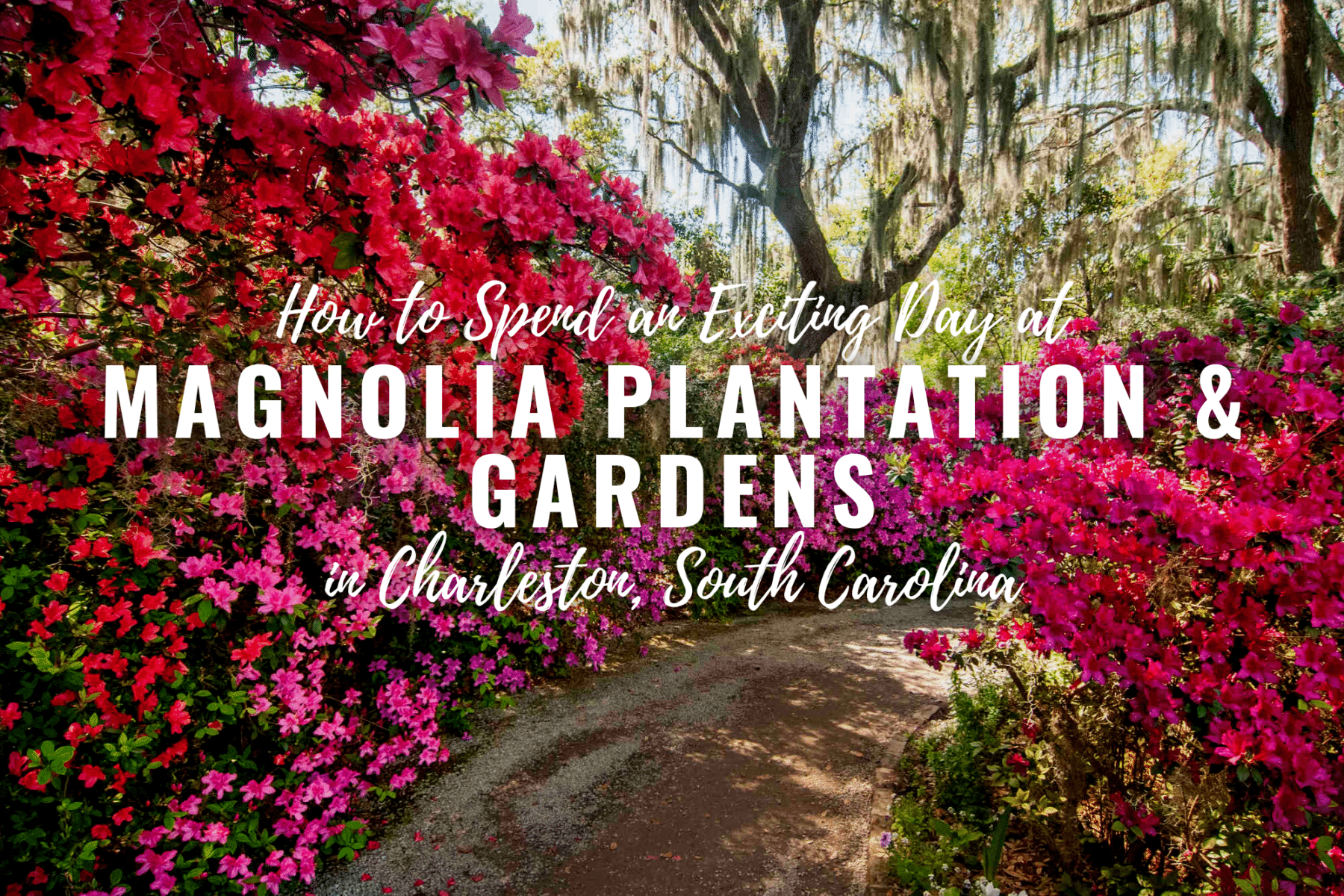
It is quite difficult to have a bad day at Magnolia Plantation and Gardens. Not that I’ve ever tried to have a bad day, mind you. Sometimes I take a long walk through the romantic-style gardens. Other times, I sit by a lake watching great white egrets fly over alligators lounging in the sun. Yes, it is quite difficult to have a bad day at my favorite plantation in Charleston, South Carolina.
I’ve been to Magnolia Plantation and Gardens about a dozen times now. Out of all the plantations in the Charleston area, this is my favorite to visit. There are so many things to see and do. And even on the busiest of days, there are peaceful nooks and crannies to explore with not another soul in sight.
One of the things I love most about Magnolia Plantation is the variety of activities. You can simply take a walk through the gardens, or you can choose from one of their exciting tours. Just about any direction you decide to walk leads to a footbridge crossing a pond, and wildlife is teeming everywhere. To help you figure out the options, I’ve put together this handy guide on how to spend an exciting day at Magnolia Plantation and Gardens.
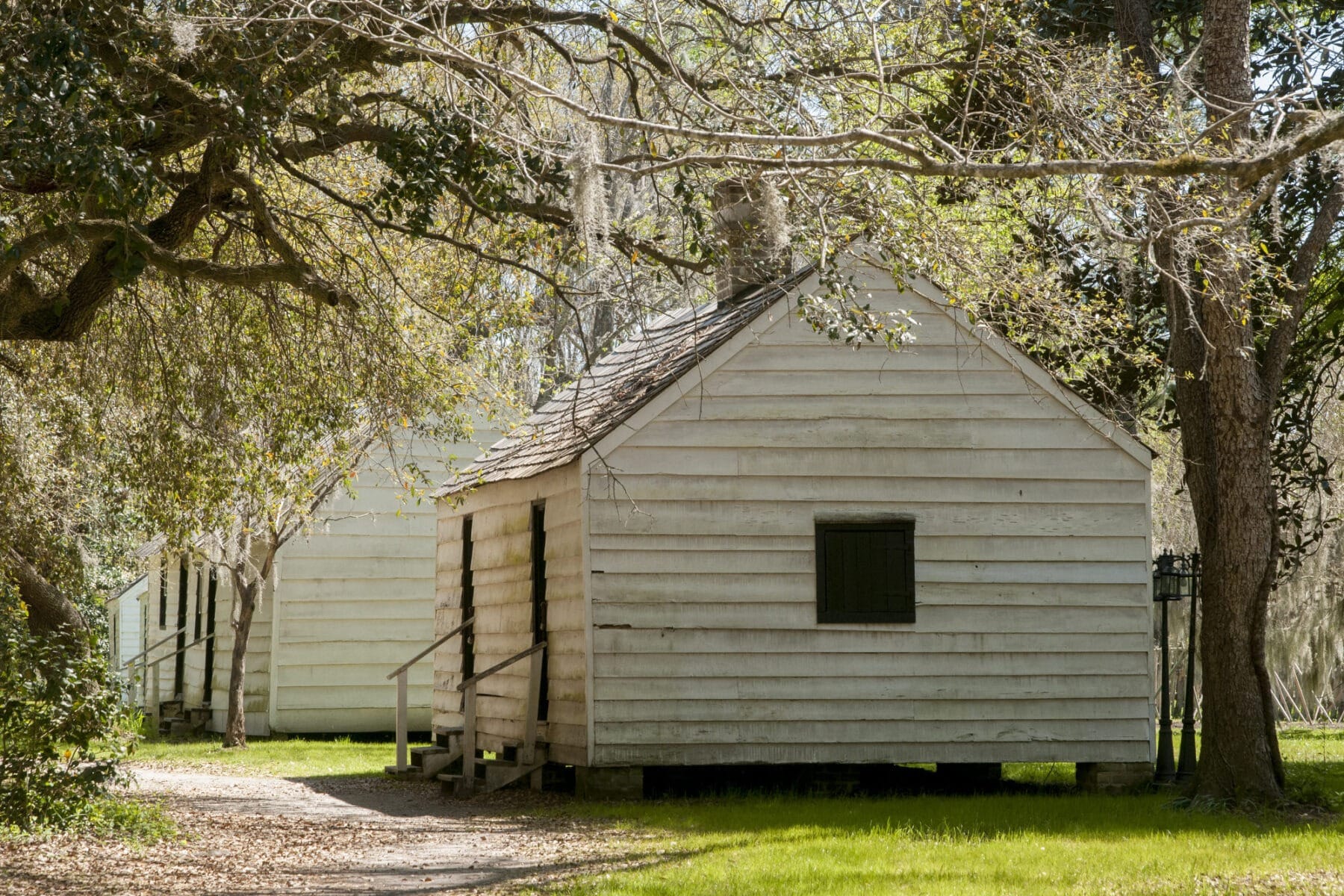
Brief History
In 1676, just a few years after the Charles Town colony was established, Thomas and Ann Drayton arrived on a boat from Barbados and established Magnolia Plantation. For over a century, rice was the primary crop produced on the plantation.
When Thomas Drayton, the great-grandson of the plantation’s founder, died in 1825, he willed the estate to his grandsons, Thomas and John Grimke. But when Thomas Grimke died suddenly from a hunting accident, John Grimke Drayton found himself the owner of a lucrative South Carolina plantation at the age of 22.
In the 1830s, Drayton contracted tuberculosis. He took time off from his work as a minister and stayed at Magnolia Plantation to recover. Decades earlier French botanist Andre Michaux brought the Asian azalea to the United States. While spending time on his plantation Thomas Drayton became the first person to plant the azalea bush in a garden.
When the Civil War effectively ended the plantation economy of the South places like Magnolia Plantation had to find a new source of income. At first, the plantation was strip-mined for valuable phosphates in the soil, but that venture didn’t last long. In 1870 the natural gardens Drayton had so lovingly tended were opened to the public for the first time, making Magnolia Plantation one of the oldest botanical gardens in the country.
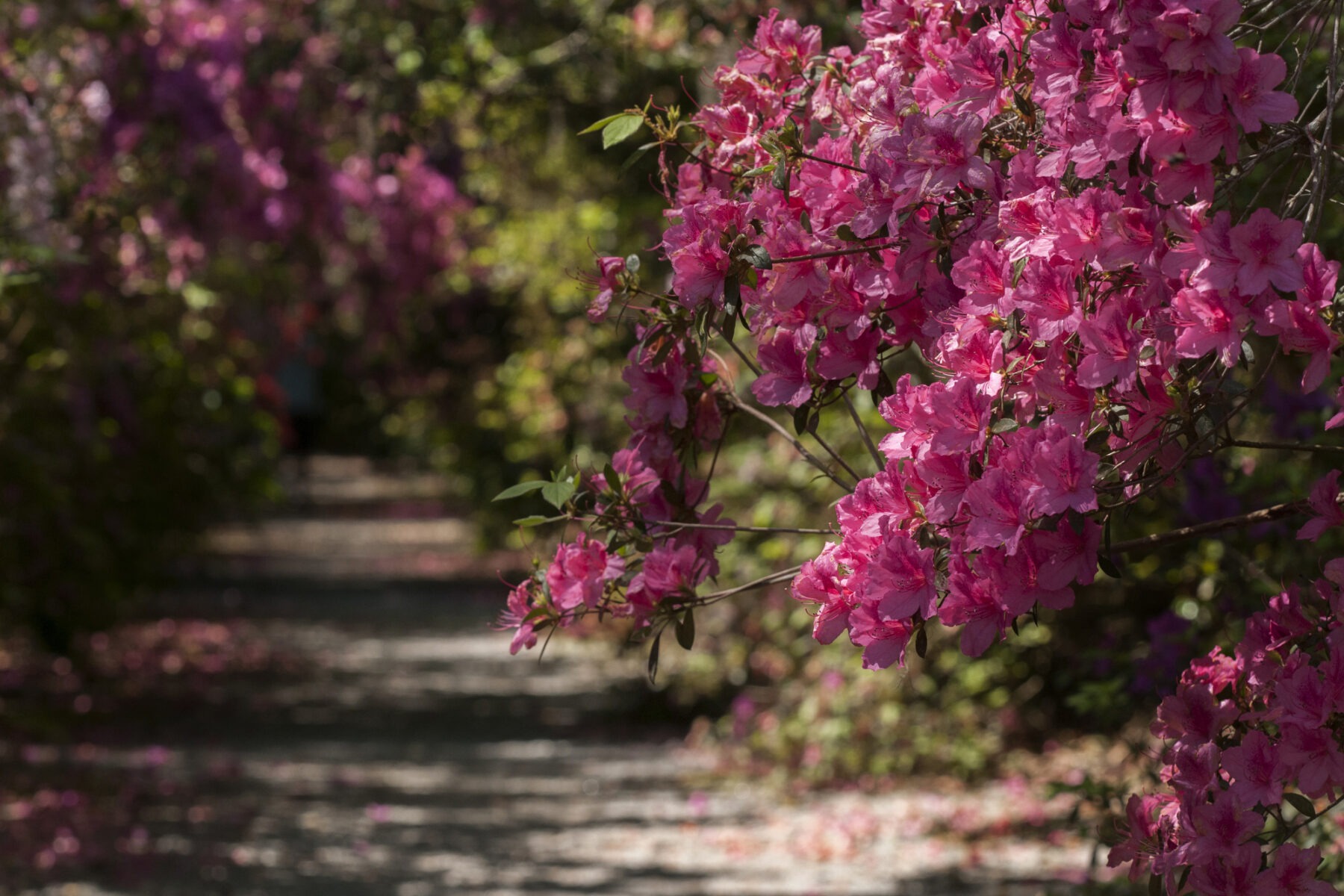
Romantic Style Gardens
According to Magnolia Plantation’s website, they are home to “America’s Last Large-Scale Romantic-Style Gardens.” Although I’m not an expert on “large-scale” gardens, I can personally vouch for the romantic-style gardens.
The paths at Magnolia Plantation are not paved with concrete but instead covered with fine gravels that crunch beneath your feet with each step. The paths crisscross, wind around lakes and ponds, and lead to secret alcoves. Massive oak trees cast a blanket of shade across the shrubs and flower beds where something different is blooming each month.
While winding through the gardens, be sure to visit the most photographed spot at Magnolia Plantation. The White Bridge stretches across a small lake near the plantation house. The bridge is a constant backdrop for selfies and portraits, but walking across it is the most exciting part.
Insider Tip
All visitors enter the gardens through the ticket booths. After you pay for admission and pick up a map, cross the road toward the restrooms. Turn right and walk between two administration buildings. You’ll come to a small pond with a view of the gorgeous red footbridge. Welcome to Magnolia Plantation!
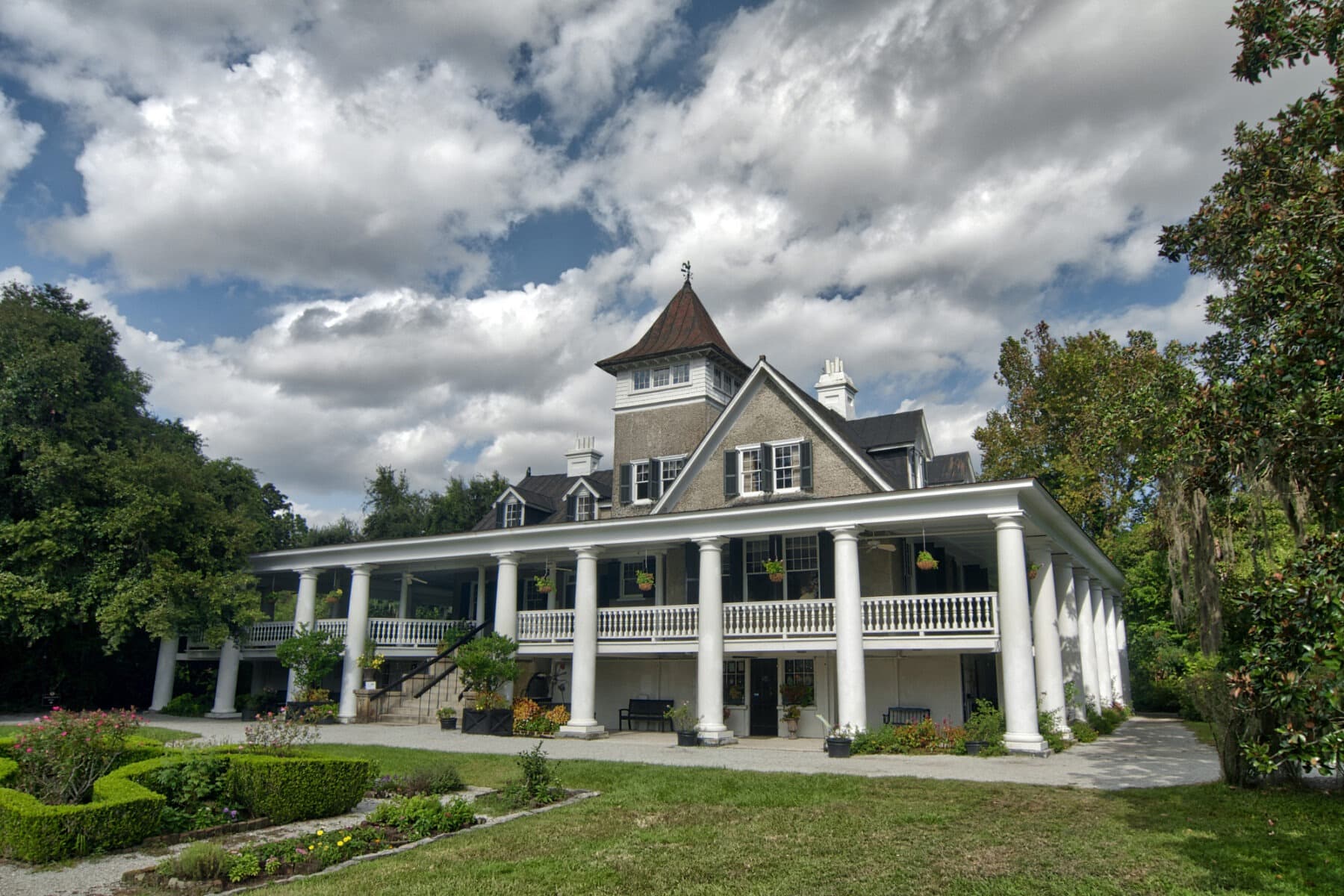
Tour the Plantation House
The Main House at Magnolia Plantation isn’t exactly a traditional southern plantation, and it’s not the original plantation house. It was built in nearby Summerville just before the Revolutionary War and moved to its current location shortly after the Civil War.
45-minute guided tours of the house explore the history of the Draytons and Magnolia Plantation. The tour covers most of the beautifully decorated home, which appears much as it would have during the 1800s. The coolest part of the tour was every time the guide stopped to say, “This piece of furniture belonged to a Drayton!”
On the ground floor of the Main House, the History Room is a no-charge tiny museum with historical photographs, artwork, and bits of history about the plantation. The Gift Shop is a chain of small rooms, each filled with locally made arts and crafts, clothing, and baked goods.
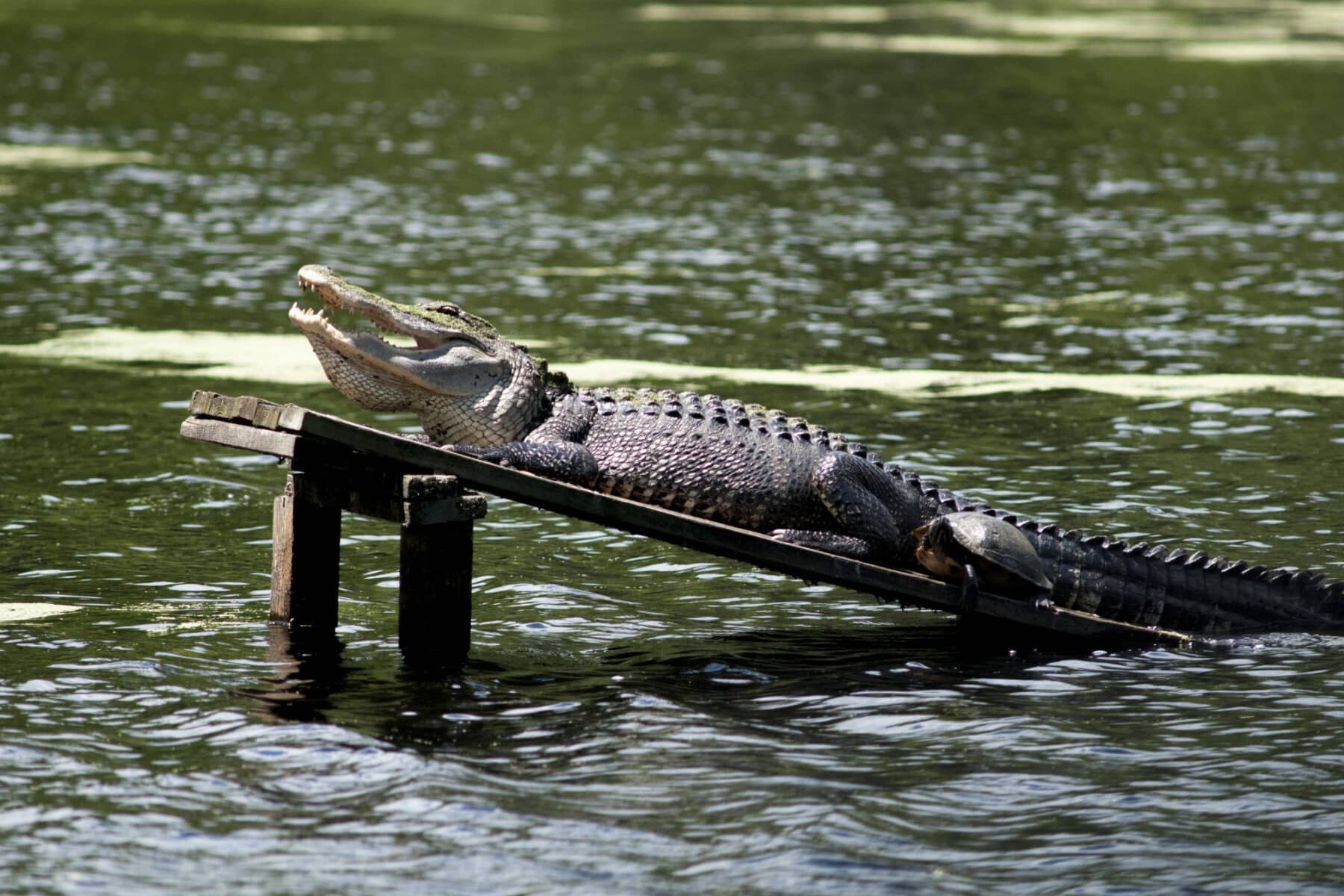
Ride the Nature Tram
One thing I do almost every time I visit Magnolia Plantation is ride the Nature Tram . A tractor pulls a series of covered trailers with bench seats on a 45-minute tour of the plantation. During the pleasant ride, the driver narrates with a history of the plantation, exciting points of interest, and always points out any alligators along the way!
I recommend all first-time visitors ride the Nature Tram because it is an exciting introduction to the wonder of Magnolia Plantation. The ride skirts the edge of the Audubon Swamp Garden, passes through the Slave Quarters, passes the Wildlife Observation Tower, and makes a stop at the Main House.
Although the Nature Tram is my favorite tour at Magnolia Plantation, it is not the only tour. The Rice Field Boat Tour is a pleasant one-hour ride on a covered pontoon boat through the former rice fields of the plantation. From Freedom to Slavery is a guided tour that explores the history of slavery on the plantation and the Civil Rights Movement.
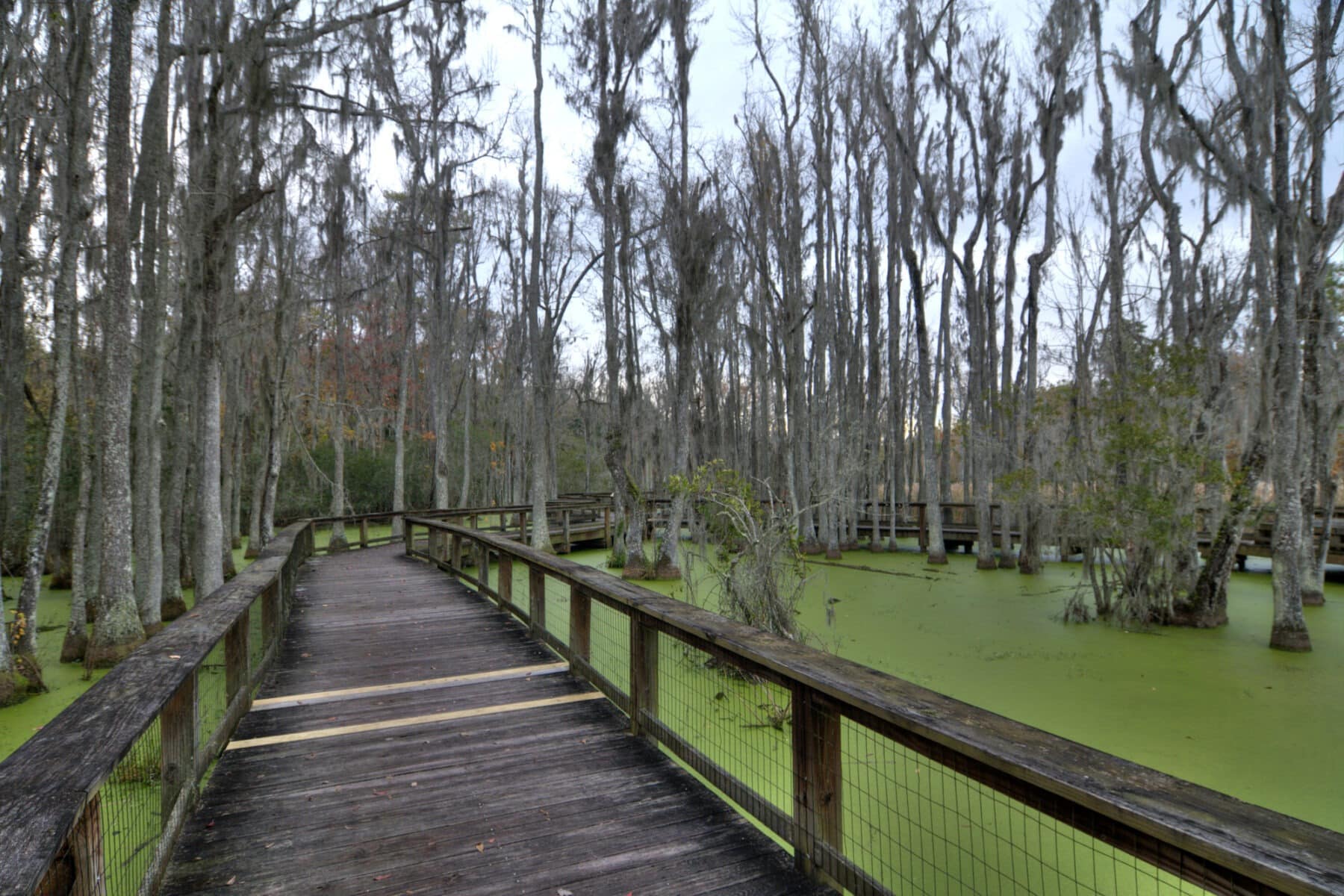
The wooden boardwalk is just the beginning of the adventure at the Audobon Swamp Garden.
Visit the Audubon Swamp Garden
One thing I do every time I visit Magnolia Plantation is take a walk through the Audubon Swamp Garden . It might surprise you to learn this often-overlooked area is my favorite place to visit at the plantation. Why in the world would this be my favorite place?
The trail through the swamp garden begins on a wooden boardwalk with an electronic gate that requires a code. This area of Magnolia Plantation requires an additional charge, like the guided tours, but it is definitely worth the cost of a few extra dollars. Like a door opening to a magical kingdom, the electric motor swings the wooden door aside, and you enter another world.
The wooden boardwalk crosses an algae-covered pond. The rhythmic thud of my footsteps on the boardwalk is often the only sound. The boardwalk passes along the edge of a second pond before coming to a sign that lets me know I have arrived at my happy place: The Rookery .
This is my spot. A weathered wooden bench between two trees on the shore of a sprawling lake. A small island with a couple of trees floats in the middle of the lake. Wooden planks protrude from the peaceful water, covered in turtles and alligators peacefully cohabitating, at least for now. Every once in a while, the familiar squawk of a blue heron pierces the silent air as it flies overhead to perch in a nearby tree.
Each year around the end of May, The Rookery echoes with the sound of hundreds of baby birds. Great white egrets and blue herons use nests in trees throughout the Audubon Swamp Garden to lay their eggs each year. Once the eggs hatch, an orchestra of hungry chirping baby birds fills the air around the lake, momentarily softening each time a momma or papa bird returns to the nest with some food. I think it’s the most exciting time of the year to visit the Audubon Swamp Garden.
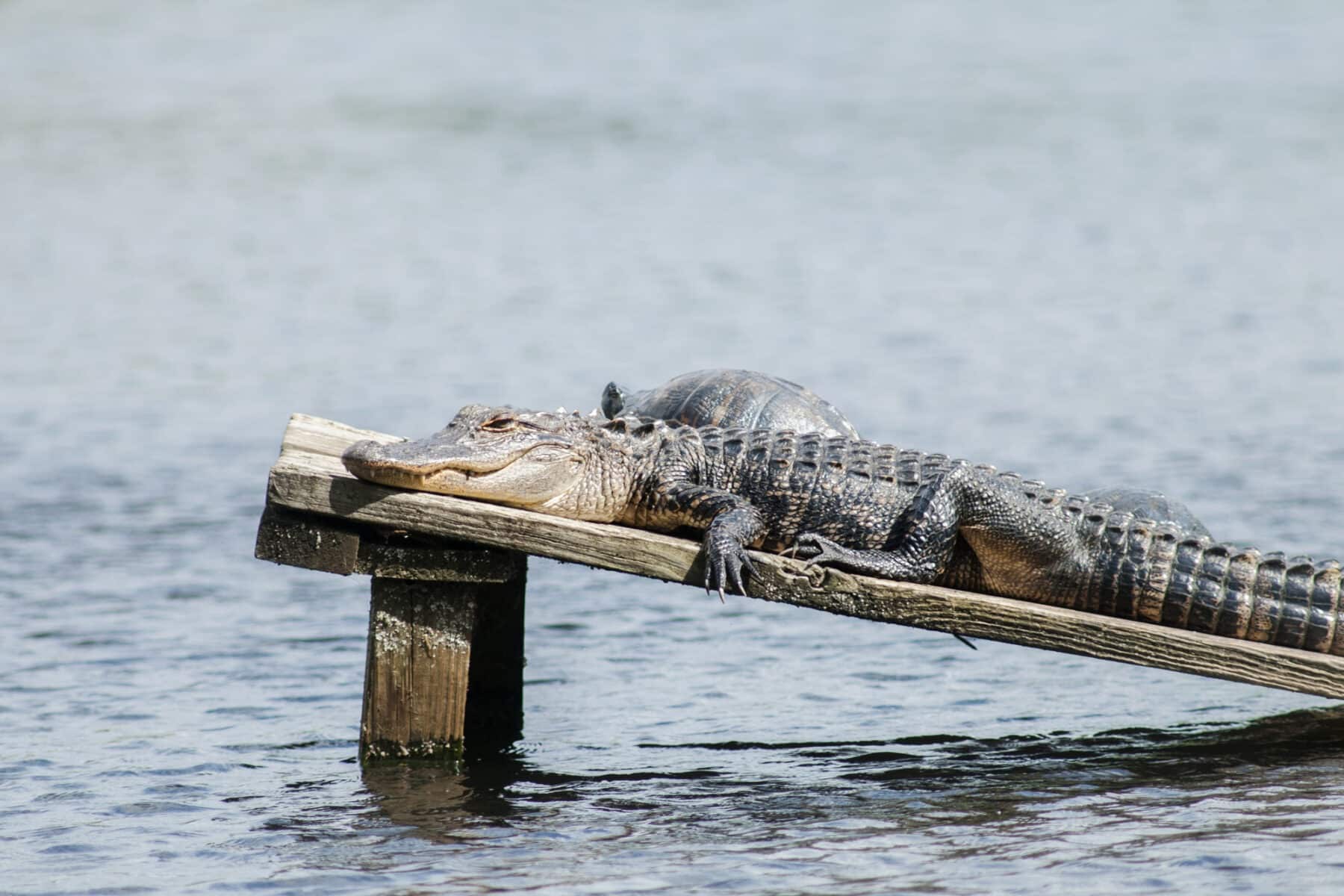
View the Wildlife
Alligators, turtles, great white egrets, and blue herons are just a small sample of the wildlife you’ll probably see during a walk through Magnolia Plantation. Beautiful peacocks greet visitors at the ticket booth, but otherwise the wildlife at the plantation is precisely that: wild.
One of the best ways to see the wildlife is a ride on the Nature Tram or Rice Field Boat Tour. The tour guides never hesitate to come to a stop to point out an enormous alligator sunbathing on a board jutting from the lake. Of course, while taking one of these tours, you are at the mercy of the tour operator, so this is really only an introduction to the wildlife.
Just after crossing the red footbridge, winding along the path, I heard the familiar knock-knock-knock of a woodpecker. I never expected to find the woodpecker only twenty feet away, thumping on a pine tree. The wildlife is everywhere!
One of my favorite places to spot wildlife is a walk through the Audubon Swamp Garden. This is where I’ve found the most abundant wildlife in and around the lakes. But it’s not the only place to see wildlife on the water. I’ve seen all sorts of wildlife while walking any of the trails, including from the infamous White Bridge.
An exciting place to spot wildlife is from the top of the Wildlife Observation Tower . It’s about a mile walk from the ticket booth along various paths, be sure to get a map to find your way, and takes about twenty minutes to get there. Climb the three stories to the top for a gorgeous view across the old rice fields toward the Ashley River.
Getting There
There are only two ways to get to Magnolia Plantation, and both involve a drive along the scenic Ashley River Road . Either way is about the same distance from I-26, so it’s really all about your starting point.
From Charleston take SC Highway 61, or Ashley River Road, through the West Ashley Suburb. Soon you’ll leave the hustle and bustle of traffic and shopping centers behind as the two-lane road passes through a tunnel of oak trees. You’ll pass Drayton Hall along the way and then come to the Magnolia Plantation entrance on the right.
From Summerville, take the Berlin Myers Parkway to bypass most of the traffic through town. Turn left onto Ashley River Road. Just like that, the canopy of leaves from old oak trees surrounds you on the quaint two-lane road. You’ll pass Middleton Place, and then you’ll come to the Magnolia Plantation entrance on the left.
Where to Stay
Magnolia Plantation is one of the best outdoor attractions in the Charleston area. With winding paths through gardens filled without thousands of blooms, guided tours expounding the intriguing history of the plantation, and teeming with wildlife, I think a visit to the plantation requires at least two days to enjoy.
Whether Magnolia Plantation is the reason for your visit or just one of many destinations you plan to visit, here are a few places I recommend spending the night.
My top recommendation for lodging is The Inn at Middleton Place, located at the historic plantation just minutes from Magnolia Plantation. With hardwood floors, fireplaces in select rooms, and enormous picture windows offering stunning views, you just might be tempted to spend a day enjoying your room! If you’re keen on a hotel, I always recommend the North Charleston area near the airport. The Hampton Inn & Suites has rooms with a single king bed, two queen beds, or a suite with a king bed and sleeper sofa for traveling families. Across the street, the Holiday Inn Express has similar rooms to choose from.
5 Responses
We just left Magnolia Plantation and are so thankful for your wonderful tips and help.
This was very helpful, thank you!
You’re welcome! It’s been too long since I visited – I need to go back soon.
Yes it’s a great time. I’m going tomorrow and was there2 years ago from tomorrow
Is ot s good time to visit the gardens in mid February.
Leave a Reply Cancel reply
Your email address will not be published. Required fields are marked *
- share this article
Privacy Policy
Copyright © 2023 Jason Barnette | All rights reserved | Seriously, don’t steal my stuff
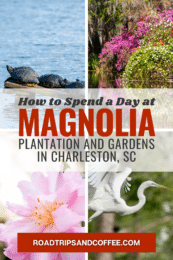
Magnolia Plantation & Gardens

Price & Hours
- Facilities 3.5
- Atmosphere 4.5
While Middleton Place 's gardens attract visitors who appreciate manicured order, Magnolia Plantation and Gardens appeals to lovers of wilder spaces and romantic-style gardens. Visitors come to enjoy camellia and azalea season in early spring and wildlife throughout the year. Observe the gators, herons and turtles in the Audubon Swamp Garden, look for local birds at the waterfowl refuge, don your helmet and bike one of the several trails, or stroll the Ashley river path shaded by graceful live oak trees. The house is worth an hour of your time to see its interior. Recent travelers agreed that the Wildlife Center and nature center make this a great place to bring the kids.
Despite its aesthetic appeal, the plantation has a deep-rooted history in slavery. It was once home to many enslaved families, who resided in the property's four cabins from 1850 until the late 20th century. The cabins have been preserved, and each illustrates a significant period in history. The plantation offers a 45-minute "From Slavery to Freedom" tour where travelers can visit the cabins and learn more about the people who were forced to live and work on the property. Recent visitors said the tour guides were well-versed and knowledgeable about African American history. Plus, the tour is included in the cost of a general admission ticket.
Magnolia Plantation and Gardens is located about 4 miles southeast of Middleton Place along the banks of the Ashley River. The house and gardens welcome visitors daily from 9 a.m. to 5 p.m. (closed Christmas). General admission, which includes access to the gardens, the Wildlife Center, the conservatory and more, is $35 for adults and $21 for children ages 6 to 12. Kids younger than 5 enter for $3. Tickets are valid for two visits within seven consecutive days after purchase. Also, keep in mind select tours cost extra and tickets for the property's boat tour can only be purchased on-site the day of the tour. To learn more, visit the official website .
Popular Tours

Charleston’s Old South Carriage Historic Horse & Carriage Tour
(7102 reviews)
from $ 50.00

Fort Sumter Admission and Self-Guided Tour with Roundtrip Ferry
(1533 reviews)
from $ 39.22

Charleston Harbor Luxury Dinner Cruise with Live Music
(185 reviews)
from $ 87.60
More Best Things To Do in Charleston, SC

#1 The Battery
Many travelers say you can't leave Charleston without strolling this historic seawall along the city's southern tip, which they call both beautiful and what makes Charleston special. Across the street from the waterfront promenade is Rainbow Row . This clutch of Georgian-style row houses overlooking Charleston Harbor was formerly the heart and soul of the city's merchant and maritime activity. Today, the 13 brightly colored homes attract camera-toting tourists from all over the country.
As you explore this picturesque neighborhood, save time for a break beneath the old live oaks in nearby White Point Garden where several Civil War relics and memorials commemorate the city's role in the battle. Start your tour of the Battery at the 8-acre Waterfront Park (home to the giant pineapple fountain featured on many Charleston postcards), then follow the walking paths on East Battery Street for the nearly mile-long stroll to White Point Garden.
Explore More of Charleston, SC

Things To Do

Best Hotels

You might also like

Myrtle Beach
# 7 in Best Places to Visit in South Carolina

# 1 in Best Places to Visit in Georgia

Hilton Head
# 2 in Best Places to Visit in South Carolina
If you make a purchase from our site, we may earn a commission. This does not affect the quality or independence of our editorial content.
Recommended
The 50 Best Hotels in the USA 2024
Christina Maggitas February 6, 2024

The 32 Most Famous Landmarks in the World
Gwen Pratesi|Timothy J. Forster February 1, 2024

9 Top All-Inclusive Resorts in Florida for 2024
Gwen Pratesi|Amanda Norcross January 5, 2024

24 Top All-Inclusive Resorts in the U.S. for 2024
Erin Evans January 4, 2024

26 Top Adults-Only All-Inclusive Resorts for 2024
Zach Watson December 28, 2023

Solo Vacations: The 36 Best Places to Travel Alone in 2024
Lyn Mettler|Erin Vasta December 22, 2023

26 Cheap Beach Vacations for Travelers on a Budget
Kyle McCarthy|Sharael Kolberg December 4, 2023

The 50 Most Beautiful White Sand Beaches in the World
Holly Johnson December 1, 2023

The 26 Best Zoos in the U.S.
Rachael Hood November 16, 2023

44 Cheap Tropical Vacations That Feel Expensive
Holly Johnson|Alissa Grisler November 10, 2023

This website uses cookies to improve your browsing experience and analyze the use of the website. Learn More

Charleston's Magnolia Plantation and Gardens

In this post, we share everything you need to know about visiting Magnolia Plantation and Gardens. There are several plantations in the Charleston area, but few are as historic and notable as Magnolia. Updated for 2024.
Admission Price
Hours and directions, additional guided tours.
- Visiting other Charleston Plantations
Open 364 days a year, including all major holidays EXCEPT Christmas Day.
- Hours : 9 AM until 5 PM
Magnolia is located at 3550 Ashley River Road, Charleston, SC 29414.
To get to Magnolia, click here for exact directions from your starting point. For written directions from a variety of starting places such as Downtown Charleston and the many area beaches, visit Magnolia's website .
This inspiring garden and home are still welcoming visitors. For one low price, you can explore the grounds at your own pace. Guided tours and activities are available at an additional cost.
- Basic Admission Ticket (2024): $35 for Adults; $21 for Children; $3 for Children under 6
What's included in the Basic Admission Ticket?
The Magnolia Gardens You can enjoy a self-guided tour through the historic gardens. Some sections are more than three centuries old, allowing you to see what the plantation looked like hundreds of years ago. Allow at least 45 minutes to look around the gardens.
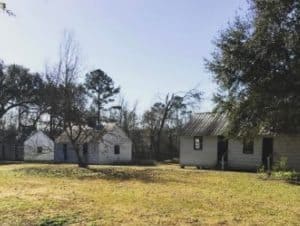
Now included in the Basic Admission Ticket is the From Slavery to Freedom Tour
The Magnolia Cabin Project Tour is a 45 minute experience that discusses Magnolia’s unique street of slave cabins which were occupied well into the 20th century.
These cabins have been carefully preserved and restored to document the full arc of African-American life at Magnolia Plantation. Each cabin reflects a different period of the African-American experience at Magnolia – from slavery to reconstruction and on through the 1920s and the Civil Rights era providing an extraordinary perspective.
A shuttle is provided to take visitors to the cabins and allow them to explore. Timed tickets are still required and they book up fast as they are first come-first served.
Also, included is access to the Garden Maze, Petting Zoo, Conservatory, the Old African American Cabin, and the Orientation Theater which shows a 30-minute film to watch before you explore the grounds.
You can also visit the Peacock Cafe and Gift Shop.

Each of the 5 below tours costs $10-15 per person (children under 6 are free).

The Plantation House Tour
This house is the third to stand here, though the original core structure was built elsewhere and floated down the river after the Civil War. Ten rooms are available to view on a half hour guided tour that shows you what life was like in the 19th century. In addition to the period pieces on display, you’ll also have the opportunity to see real family heirlooms from the original owners. If you want to learn about the Draytons and their home, this tour is an absolute must.
Tour starts on the front porch of the Plantation house. Tour begins at the top of every hour, beginning at 10:00 AM and ending at 4:00 PM.
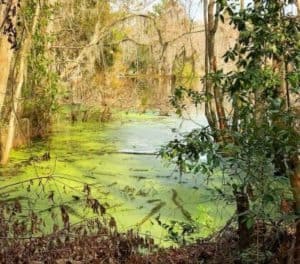
Audubon Swamp Garden
The Audubon Swamp Garden features thousands of plants and animals living in the cypress and gum trees deep in the blackwater. Uniquely wild vistas this beautiful aren’t often found in the low country, and this is an area you can easily traverse on boardwalks and bridges. The swamp garden is so large and extensive that you’ll want to set aside at least an hour to explore its length.
Once you have purchased your ticket, you are free to stay and enjoy this special garden until dusk.
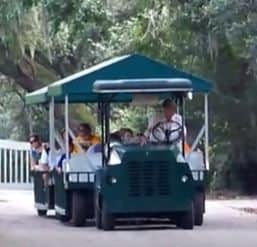
The Nature Train Tour
The Nature Train is a 45-minute tram tour of the Magnolia Plantation’s diverse landscapes, lakes, woodlands, marshes, and rivers while guides describe the estate’s history and wildlife. It’s entirely possible that you will see wild animals such as an alligator or blue heron while on this train. Take a break from walking through the garden and let a guide drive you around instead. Discover what made this land so desirable as you enjoy the natural splendor on display!
The Nature Train departs from a train depot near the main parking area. Departure is every half hour, but could be delayed for various reasons. Check with the Admissions Gate or Office when you arrive.

Rice Field Boat Tour
The Rice Field Boat Tour is roughly an hour long boat ride that explores the plantation’s 125 acres of rice fields. As you float down the river, guides will explain the culture and history behind the area. This tour also offers excellent wildlife viewing, including potential encounters with alligators and egrets. Take a break after a long day of walking the grounds and enjoy a nice trip down the Ashley River as you learn about the rice fields.
Tour departs from a dock in the Magnolia gardens. This tour is available every day of the week from March-October.
Related posts:
- Where to Stay in Charleston
- Charleston on a Budget
- Historic Charleston | A Self-Guided Tour
Founded in 1676 by the Drayton family, this plantation has been welcoming visitors since 1870. It is the oldest public garden in America and some sections remain in their original state for over 325 years. Not only has this estate been in operation for over three centuries, but they were actually one of the first locations to welcome visitors after the Civil War.
Today, Magnolia Plantation is a house museum that has been restored to look as it did during the Civil War.
Choose a Destination... I want them all PLUS general travel tips. Amsterdam Berlin Boston Charleston Chicago Dubai Lisbon London Los Angeles Miami Nashville New York City New Orleans Paris Philadelphia Prague Rome San Francisco Washington DC
About The Author

Scott Nelson
North america, united kingdom & ireland, middle east & india, asia & oceania.

Inside Magnolia Plantation – South Carolina
Magnolia Plantation is one of the most famous places in South Carolina. There are decades of history, both great and dark, which gives the place a lot of character. Although the place’s popularity gives the impression of a tourist trap, it’s more significant than this. There is a lot to see and do at Magnolia Plantation, lots to learn, and if you are open-minded, it gives you first-hand insight into Southern History. This article will cover the history of Magnolia Plantation, the attractions, and everything you need to see, do and know about the place. I will also give you my take on the ethics of plantations as tourist attractions and how Magnolia Plantation.
This post may contain affiliate links. Please read our disclosure and privacy policy for more information.
How Did Magnolia Plantation Land On My Radar?
Recently I’ve been on a journey with a dear friend to understand the trials and tribulations of black people in America through the eyes of a black person. In other words, I am learning what the experience is like firsthand without bias from news outlets, skewed agendas, or propaganda. I grew up in England. My experiences growing up were dramatically different from those of someone growing up in America.
As a part of this learning, I started to study the American slave trade and its connection to plantations of the south. I knew that plantations were considered “historical estates” and, in some cases, glorified as “romantic places to get married .” I also knew that many of them offer tours which immediately implies tourism and profit.
What I wanted to understand is do these plantations cover up their dark past? Do they acknowledge and tell the story of slavery that was the backbone of their labor? Do they ignore or hide that fact that plantations were forced work camps?
When I started researching several plantations, and I admit I formed an early opinion of sheer disgust. My perception of visiting a plantation was akin to glamorizing slavery. It hasn’t changed much; I still believe there’s injustice. However, I did learn that not all plantations are equal in how they present themselves – and their notorious pasts.
Specific to Magnolia Plantation, I learned that progress is being made, slavery is acknowledged, and I am glad that I experienced it to form my own opinion.
If you are easily offended, not open to new thinking or perspectives, or hold on to the “glory of the Old South,” this article is not for you.
My Experience Growing Up
I did not grow up in the United States, so my experiences are not the same as most that will read this. I grew up in a diverse community and early interacted with the black community. This made me ignorant or naive relative to the black communities’ plight in America – more fuel for why I wanted to go on this journey. To understand how this was different, you need to understand the differences in how the majority of British Blacks arrived in England.
History Of The British Empire
Between the late 16th and early 18th centuries, The British Empire was composed of colonies and territories. Or, in other words, included countries it had taken control of. This included many Caribbean Islands and African counties. The first wave of mass immigration to Britain began during World War I. Britain called on “Afro- Caribbeans,” aka black Caribbean people, to fill jobs left empty due to the drafts. This happened again in World War II.
Most colonies achieved independence by 1966, some following shortly after – some chose to remain. Until 1962 all Commonwealth citizens (those considered part of the British Empire) could freely enter the UK to work.
Now before everyone gets all fired up, let me address some facts:
- Yes, The British Empire enslaved black people worldwide – long before America was discovered! And yes, the British Empire once rampaged through countries, robbing them of their independence and their assets, and then ruled over these counties as their own.
- No, The British Empire as it was is not “innocent” or “immune” from its participation in the slave trade.
- Yes, black people and other communities have and still do experience racism in England – however, nowhere near to the degree they would in the United States.
A simple example that should resonate with anyone is this: In England, a black person does not have to fear being shot if they get pulled over.
Now that that’s out of the way, let’s get back to the Commonwealth citizens who were entitled to migrate to England. Much of this migration was from Jamacia, Barbados, and Trinidad. By 1962, around 250,000 Afro-Caribbean migrants had settled permanently in the UK – 250,000 who chose to migrate.
The black community where I grew up in the 70s were the grandchildren of parents who made a conscious decision to move there. This community does not identify as “African” anything; instead, they are British or Black British.
So, where am I going with all this?
- I do not have ancestral lineage to the north or south of America.
- Throughout this article, I will refer to black people as “black,” regardless of their ancestral lineage.
- My generation and the two before me did not experience slavery firsthand in England.
- Many of the black people I know in America have family members who grew up on plantations . These family members have obviously passed, but their children and the children after are still here.
This article is my representation of my personal experience at the plantation and my opinion.
The History of Magnolia Plantation
Magnolia Plantation may be a popular attraction or museum, depending on how you define it, but that’s not how it began. When the manor wasn’t there, it was just a regular old house for a couple that had just moved to the area. Thomas Drayton and his wife Ann Drayton moved to Magnolia from Barbados in 1676. At first, the pair just built a house to live in it. In front of it, they made a little garden, not knowing that that very garden would go down in history.
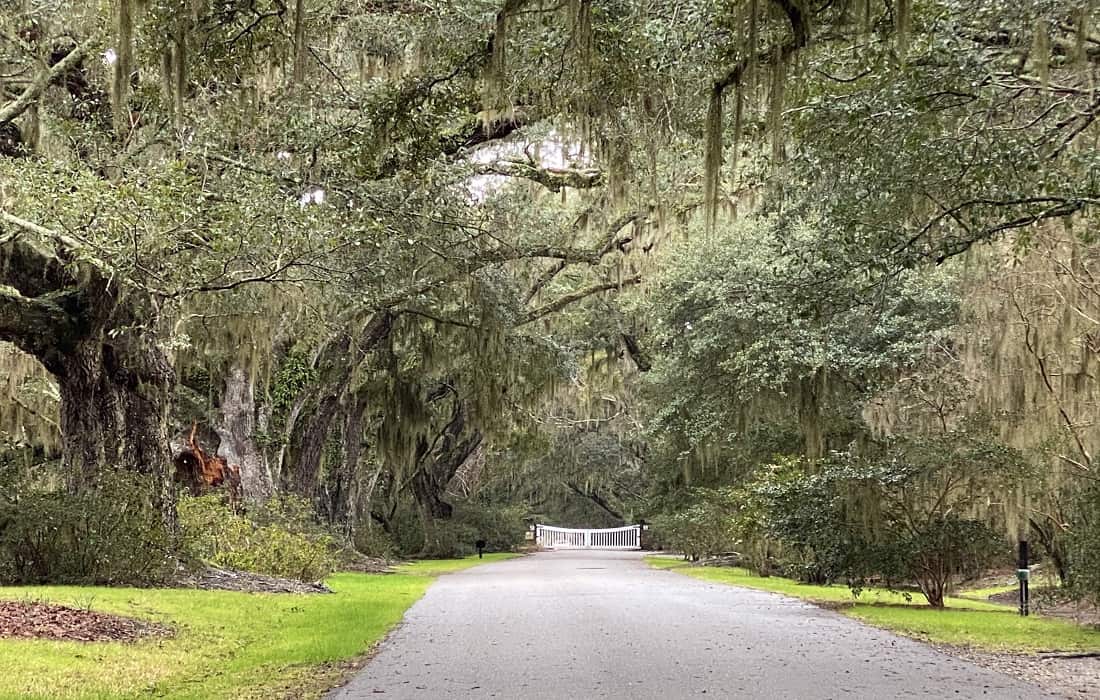
The American Revolution – 1765 Through 1791
British and American troops lived on the grounds during the American Revolution, and the Drayton sons served as troops. The plantation was an afterthought at the time. The primary purpose the grounds served was to provide housing to the soldiers.
Post-American Revolution
As the Drayton family got more affluent, they expanded the garden and made it a plantation. It was among the very first plantations in the US. At first, it was reasonably small, with just two people working the grounds. Eventually, the plantation grew more extensive, and enslaved people worked the lands to grow rice. As the years went on, the plantation grew more prosperous.
In 1825, Thomas Drayton, the ground owner, was dying. He had inherited the property from his grandfather, the original Thomas Drayton. However, since Thomas didn’t have any sons to leave the property to, he decided to pass the property down to his daughter’s sons, Thomas and John Grimké. The only condition was that the boys would have to take her name as their last name and go by “Drayton” to receive the property. They could pass it down to their kids, and the Drayton name would live on. So they did.
Thomas was the older one, so he was meant to inherit the property, but before that could happen, he was shot in a hunting accident and died on the steps of the property. Because of this, John Grimké inherited the property instead when he was just 22 years old.
The shift here was that, unlike his family, he wanted to shed the dark past of the plantation. He hated the concept of slavery and wanted to make sure that the grounds wouldn’t be known for that anymore. So, he transformed the whole area into a series of natural gardens instead.
Magnolia Plantation Under John Grimké
John Grimké was a minister. He got an education in clerical studies and married a woman he met while studying in New York , Julia Ewing. The two got married and moved over to Magnolia. Once his family settled there, John started working on the gardens full time. Some of the gardens were made specifically for his wife! For the next 50 years, John worked on those farms until his death.
Magnolia Plantation in the Civil War – 1861 Through 1865
Since Magnolia Plantation was one of the first of its kind, it held a name as a plantation where enslaved people worked. That made it a pretty massive target during the Civil War. Magnolia Plantation manor was attacked and burnt down. However, that just ended up being a fresh start for the place.
A few years down the line, the manor was rebuilt. The gardens that John set up were still there and are still there today! Throughout the years after that, The family renovated the mansion. Much expansion work was held there to restore its original beauty and give it a brand new life.
What used to be plantation grounds with years of painful history is now one of the largest public gardens in the US, where people flock around the year to experience it.
About Magnolia Plantation Today
Thomas and Ann Drayton initially built Magnolia Plantation. Even though the plantation and the entire property have been through several owners, it’s always been in the family. Several hundred years later, today, Magnolia Plantation is still under the ownership of the Drayton family, but it’s open to the public.
It is now listed on the National Registry of Historic Places.
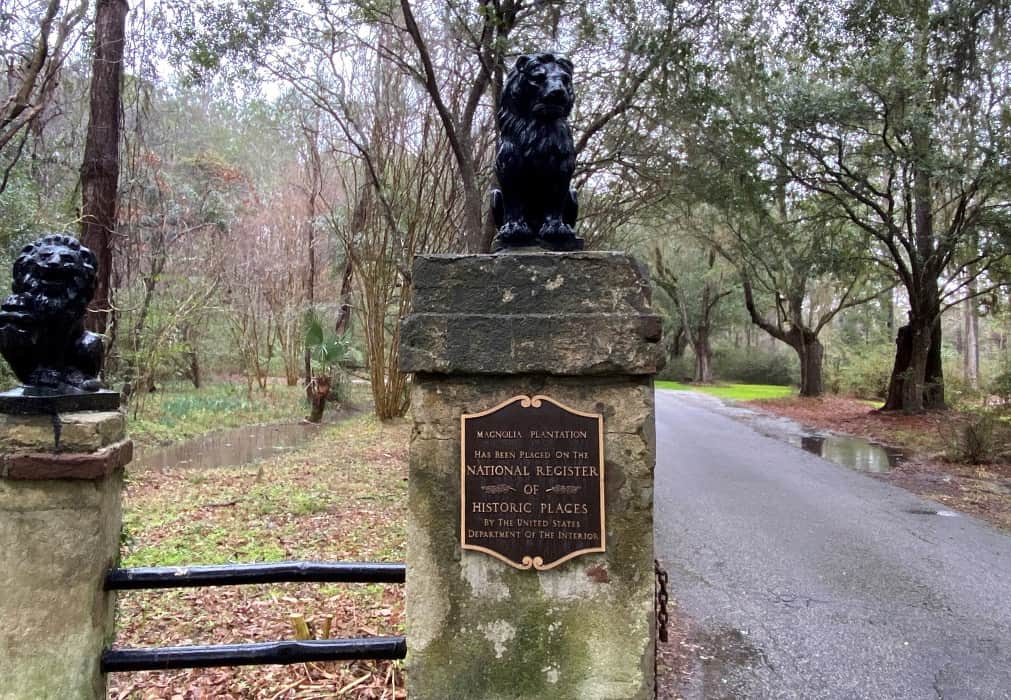
One of the things that set Magnolia Plantations apart from the rest of the plantations in the US is the fact that they don’t shrug off the darker side of their history. They acknowledge that enslaved people had a significant hand in making the place what it is. The success of the property would’ve been impossible without them.
Deciding To Visit Magnolia Plantation
When I found out that we were going to Charleston, South Carolina, the first thing that came to mind was Magnolia Plantation. Having been persuaded to at least visit a plantation before putting pen to paper, I decided to give it a shot. Fortunately for me, this was a wise decision as there are some elements that I think warrant being on The National Registry of Historic Places.
My Experience At Magnolia Plantation
I learned a lot on this tour, perhaps more than I expected. This said, the main attraction – the house was underwhelming yet enjoyable. The gardens are the star attraction of the entire estate, not the house. I always enjoy touring estates, mansions, and so on, and I love history. Magnolia Plantation was as interesting to me for these reasons alone. Slavery aside, I found the estate fascinating.
Do I think Magnolia Plantation does a fair job representing history? Yes. Overall, I was relatively impressed. Like Germany, this plantation does not shy away or cover up the ugly side of history. However, it’s not perfect – there’s plenty of room for improvement.
Inside The Main House
Since Magnolia Plantation is still privately owned, not all property is open to the public. However, a major part of the main house can be visited. At the moment, ten rooms are open to the public.
Inside the main house, you can take guided tours that detail everything, from how the family lived there and how they went about their daily lives. The main house is still the way it was when it was first opened to the public. Artifacts collected over 350 years are up for display, from antiques and porcelain to fabrics and furnishings. There are even sections of the rooms dedicated to the family heirlooms passed down to all the generations of Draytons that lived on the estate!
I was stunned at the size of the actual plantation house. While it has a large porch, it is small inside. I was expecting a mansion dripping in silk and gold. You will be hard-pressed to find either. It is not luxurious or opulent in any way, shape, or form. To be frank, it’s bland at best. I’ve visited tons and tons of historical homes, and one thing was clear to me. Despite the plantation staus, this family didn’t have excess money. If they did, it was not spent on the house.
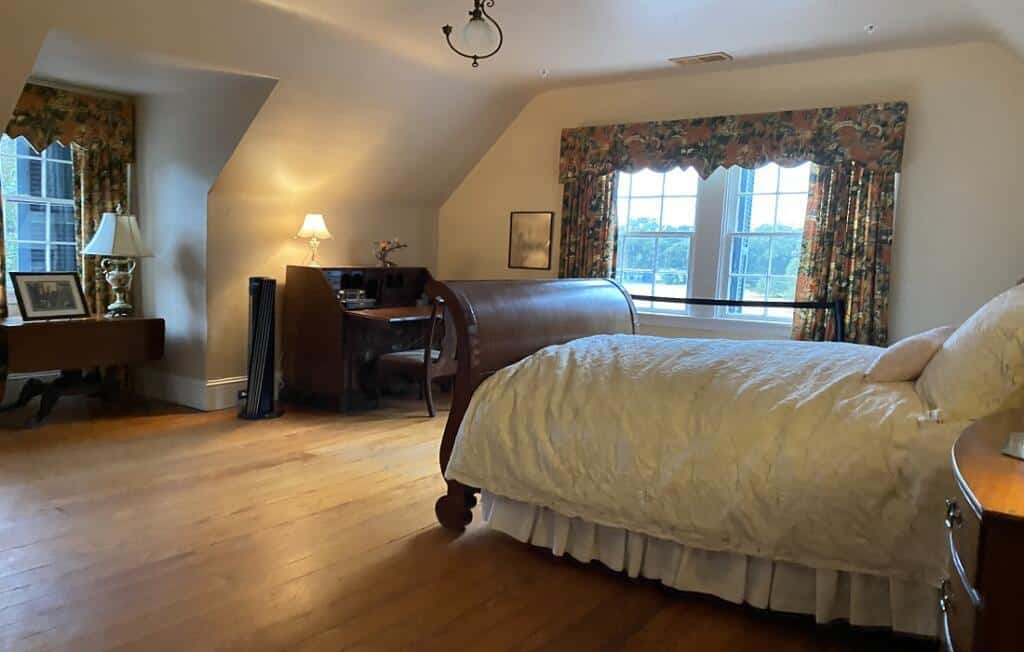
Historical Gardens
Even though John meticulously planned the gardens at Magnolia Plantation, they don’t look like they were. All of the gardens carry an effortless, fairytale garden of Edan type of look. They’re unique and almost seem unreal to the visitors that go there for the first time. The bridge that dresses the lake is beautiful. Looking at the lake, I could see (not agree) why someone might choose this place for nuptials. Photographically speaking, it’s stunning. Even on a cold February afternoon, you can still see the beauty of these gardens.
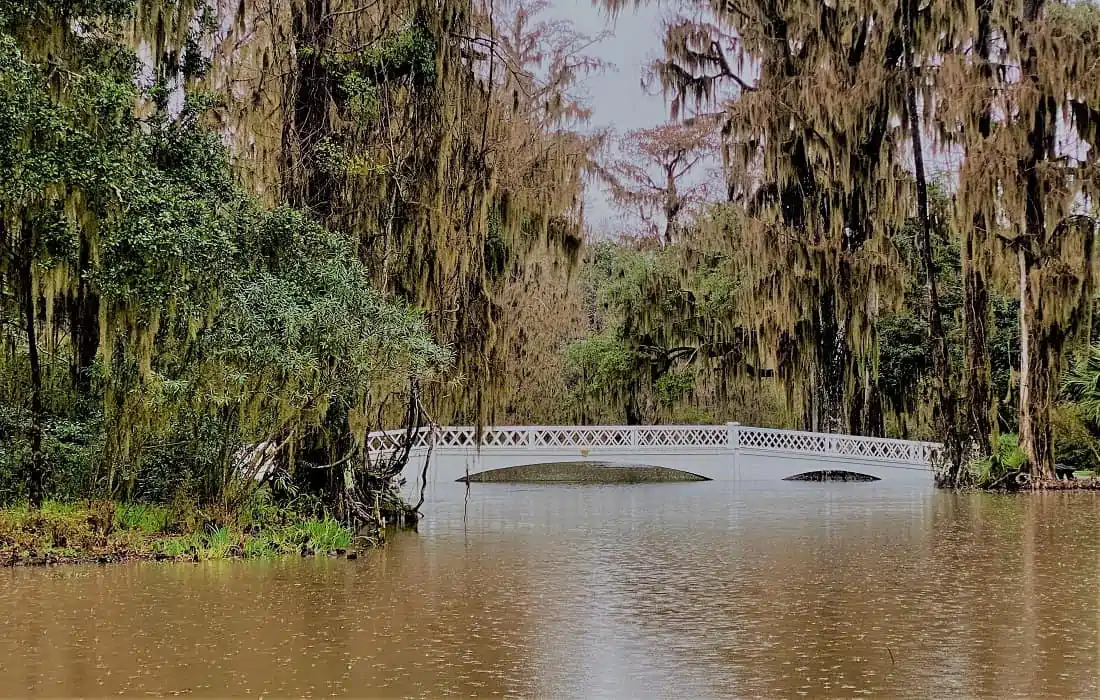
The family opened the historic gardens to the public in 1870; ever since they’ve been hosting people from all over the world who come to look at the thousands of plants and flowers in the gardens.

Zoo And Nature Center
Although most people visit Magnolia Plantation to see the main house or the gardens, the property also has a fantastic zoo and nature center. There are all sorts of native animals at the center, from insects and farm animals to more dangerous ones like foxes, bobcats, and even venomous snakes. The guides provide educational tours throughout the zoo and nature center.
The Conservatory
The conservatory at Magnolia Plantation allows visitors to view the whole property. It’s a vantage point where you can see the “now” of the plantations while learning about the “then.” Because of the beautiful location of the conservatory, it’s also a popular event venue. Weddings, dinners, and other events are held there throughout the year. Keep reading for my thoughts on this!
The Peacock Cafe
The Peacock Cafe at Magnolia Plantation offers tea and snacks throughout the year. It looks like an average cafe from the first look, but the difference is that peacocks roam free in it! You could be having tea, and a peacock could brush past you. Live peacocks are the attraction that most people go to the cafe for.

Gilliard Garden Center
There are lots of tiny cabins throughout Magnolia Plantation. One of them is the Gillard Garden Center. This is a cabin in honor of Tena Lena Gilliard, who was a greeter and revered employee at Magnolia during the turn of the 20th century. She was an employee at the facility for several decades and had made her mark. Gilliard once lived in the cabin that is now the garden center that bears her name.
Slavery at Magnolia Plantation
During the peak of slavery, in the 1800s, 235 enslaved people were owned by the Drayton family. They all worked on the grounds and lived in their own dedicated “slave cabins.”
Because of the changes in behavior that John Grimké brought, things changed at Magnolia Plantation even before the Civil War. However, after the Jim Crow era of the 1920s, even though the enslaved people were no longer required to work there, many of them decided to stay. They worked as paid tenant farmers, workers, and gardeners at the farms. Their families continued to live on the estate for decades.
Oh, how noble this sounds. Only those that worked as paid tenants were part of the Share Cropping system. A term many do not understand. The now “free” slaves rented the land they once farmed for free. Fair enough, right? Only when a crop did not deliver rent was still due. To be blunt, this was not an even trade. The white man still got paid regardless of if the land produced a harvest. And the rent was paid in many more ways than money. Ask any third or fourth-generation black person in America that has a family member that was part of the Share Cropping system, and be prepared to hear horror stories.
Slavery to Freedom Tour
Visitors can opt to take the “Slavery to Freedom” tour. This tour starts with visiting the cabins the enslaved people lived in. Everything was restored and modeled to look exactly like the cabin was in the 17th Century. Everything right down to the furnishings is there the same way. That gives insight into how enslaved people lived while working the plantation grounds.
Outside Slave Cabin
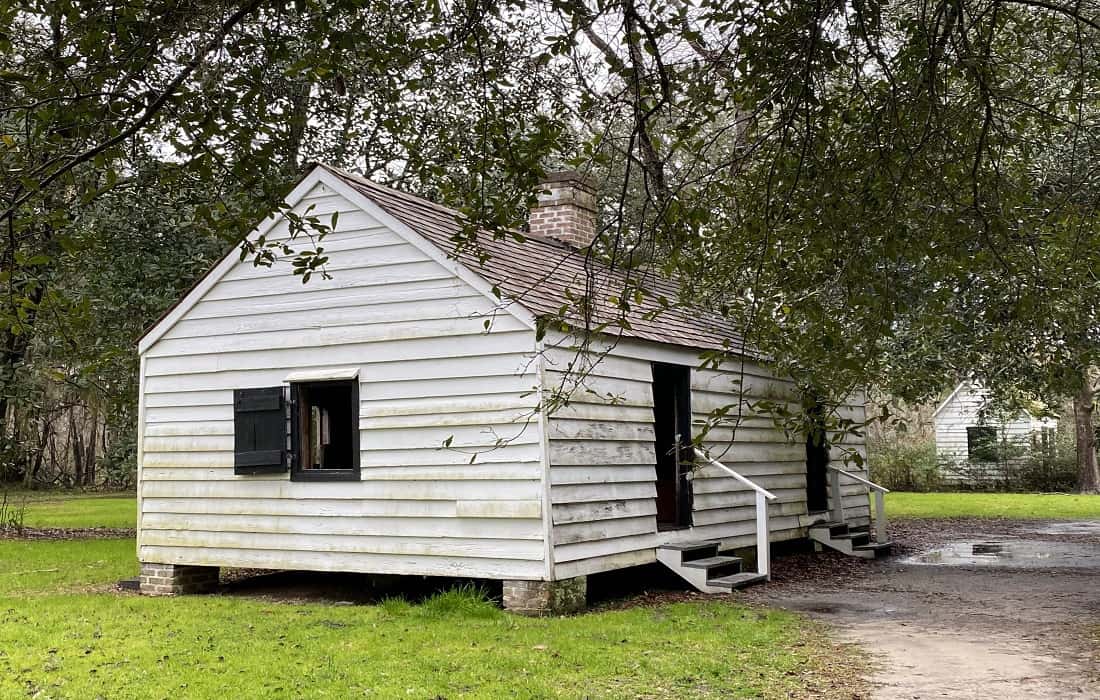
Inside Slave Cabin

The tour starts with an educational lecture on the history of the slave trade in America. Afterward, a detailed discussion is conducted about the complete 350-year history of the land. The enslaved people are the center of discussion. Magnolia Plantation management ensures that they don’t overlook the enslaved part of history. A complex topic that many plantations like to gloss over.
Magnolia Plantation acknowledges the enslaved people’s work in the place. It’s fascinating to see everything firsthand, but it’s bleak. You roam through the different iterations of slave cabins learning about the progression of cabin conditions. For example, when slave cabins were first established, they were not on stilts. Humans lived in swamp -ridden houses, which meant their feet were permanently wet. Naturally, this was not good for the enslaved person’s feet and could render them unworkable. So over time, the cabins were raised.
Slavery to Freedom is Magnolia Plantations’ way of giving back by making sure the history of enslaved Black people at Magnolia is never lost. I will commend Magnolia Plantation for their Slavery to Freedom Tour. I found it extremely honest, accurate, and compelling. It sheds light on the horrendous living conditions of enslaved people. The cabins show the progression of living conditions which they certainly evolved. They were never humane.
Through Black Eyes
There was a young black couple on tour with me. I asked them what they thought about walking through the slave cabins and if they felt the tour was appropriate. Their response to me was, “they believed that this was an accurate representation and that it reminds them how far society has come.” I asked them, “When you see this do you have any sensation of remorse, regret, disappointment, or anger towards America?” They said no. Then went on to add that it’s a stark reminder of what the past relieved could be and that we are making progress in the right direction.
Controversy and Criticism
I have two pieces of criticism for Magnolia Plantation.
First Criticism – Slavery to Freedom Tour
The Slavery to Freedom Tour is an add-on tour. This means that you can tour all of Magnolia Plantation and never learn about the slavery here. And, you have to pay an additional fee to take the Slavery to Freedom Tour. I disagree with the concept of people being allowed to tour a plantation and only seeing the glamorous romanticized gardens and manors. This, to me, presents a false illusion that does more damage than good – it enables ignorance.
Without understanding where the labor came from and the history, a plantation can be presented as just an elegant Antebellum home or a museum. Given that the backbone of these lucrative operations relied on slavery, I firmly believe everyone who visits should be required to take the Slavery to Freedom Tour.
Not requiring this is shitty for several reasons:
- Visitors are given the option to choose to ignore the full story.
- It indirectly promotes callowness.
- This is an opportunity to educate every visitor on all aspects of history – not just the pieces we like.
- It’s a kick in the teeth to families that were enslaved here.
- It is a real F*** you to Black people in America.
Bottom Line: The Slavery to Freedom Tour should be required for all that visit and it should be included in the ticket price. I know lots of people will disagree with me on this and that’s totally fine.
Second Criticism – Events and Weddings At Magnolia Plantation
Plantations have a dark and painful history, so most people don’t celebrate events like weddings there. Magnolia Plantation has put in a lot of work to ensure they preserve the history of the enslaved people and have a program that educates them. This is great, but continuing to offer weddings is absurd. Who would want to say “I do” at a plantation that all associate with slavery? Plenty of people still believe it’s appropriate, hence continuing these weddings.
Weddings At Plantations
Researching the different opinions on the ethics of a wedding on a plantation, I came across this an article about couples that chose to get married on a plantation and defended their decisions. Here’s what Mrs. Helms had to say:
To her, these plantations are acknowledgments of the country’s past. The criticism against plantation weddings, Helms said, largely comes from social media and people who don’t live in the South. “Because of the world we live in now, it’s all about race and everyone wants to put everyone in a different category,” she said. “I think it’s a shame because everyone’s so accepting, and social media is dividing people because people get so offended by everything.” Source: Brides And Grooms Who Got Married At A Former Slave Plantation Are Speaking Out About Criticism Of The Venues
Helms chose to leave her name out of the article, and her face was blurred out. Why do this if what she believes is just? Dear Helms, have you ever read anything other than what social media feeds you? Have you ever talked to a black person about slavery, or did you get a silver spoon from daddy that made you feel exonerated from any moral compass?
Again, I know tons of people will disagree. I can hear them screaming “southern history” and “where do we draw the line.” Let’s draw the line here, people – it’s abhorrent. It is not appropriate to hold a wedding on a plantation. Lastly, many plantations have changed their names to exclude the word “plantation” for this sole reason.
A Good Example To Follow
Whitney Plantation is the only museum in Louisiana with an exclusive focus on the lives of enslaved people. During a visit here, you will learn about the history of slavery on a southern Louisiana sugarcane plantation. And, they DO NOT allow weddings!
Given the sensitive nature of the museum’s focus, Whitney Plantation does not allow weddings or other private events. If you have an event in mind that is in keeping with the mission and values of the museum, you may submit a request. Source: Whitney Plantation
Everyone who visits the Whitney Plantation , located on the west bank of the Mississippi less than an hour’s drive from New Orleans on Louisiana’s historic River Road, receives a card. Each bears the story of a different slave, derived from interviews with more than 2,300 former slaves conducted by the Federal Writers’ Project in the 1930s. Source: National Geographic
Magnolia Plantation and all the others should take note. There is a right and wrong way to approach the darker side of history.
Tours At Magnolia Plantation
- Historic House: This is a guided tour throughout the main house at Magnolia Plantation. Visitors get to tour the ten rooms that are open for public viewing.
- Slavery to Freedom: This is a comprehensive tour that details the slavery period on the plantation. Visitors go through the cabins and the workrooms and learn all about the harsh history of the place. This tour comes complimentary with the Garden Admission ticket. However, it’s not included with the tour of the actual house.
- Nature Tram: The Tram tour goes all around the outside of the property. There are beautiful landscapes throughout the tour, and a guide is present the whole time, describing the hidden secrets of the property.
- Nature Boat: This tour isn’t available all year round. When it is, the boat rides along the river in Magnolia Plantation. The guides tell the visitors all about the rice fields, the river culture, and those that are lucky even get to see the alligators out and about!
- Audubon Swamp: This is a black water cypress and tupelo swamp that visitors can explore. The grounds were for rice cultivation centuries ago, but today have a more “modern” look. A walk through this Tour makes everyone wonder why the name “Swamp” still exists because it doesn’t even look like one!
- Historic Garden Walk: Finally, we have what may be one of the most famous tours at Magnolia Plantation. Visitors can walk through the beautiful gardens that have been the same since the 1600s. While also learning about rice cultivation and the role of the property during the American Revolution and the Civil War. With that, they can also learn about all the little things that most people would miss on their own!
Gift Shop At Magnolia Plantation
Magnolia Plantation gift shop is located on the first floor of the main house. There are lots of unique and great gifts to choose from here. There are tons of historical books documenting South Carolina, the slave trade, and the Magnolia Plantation.
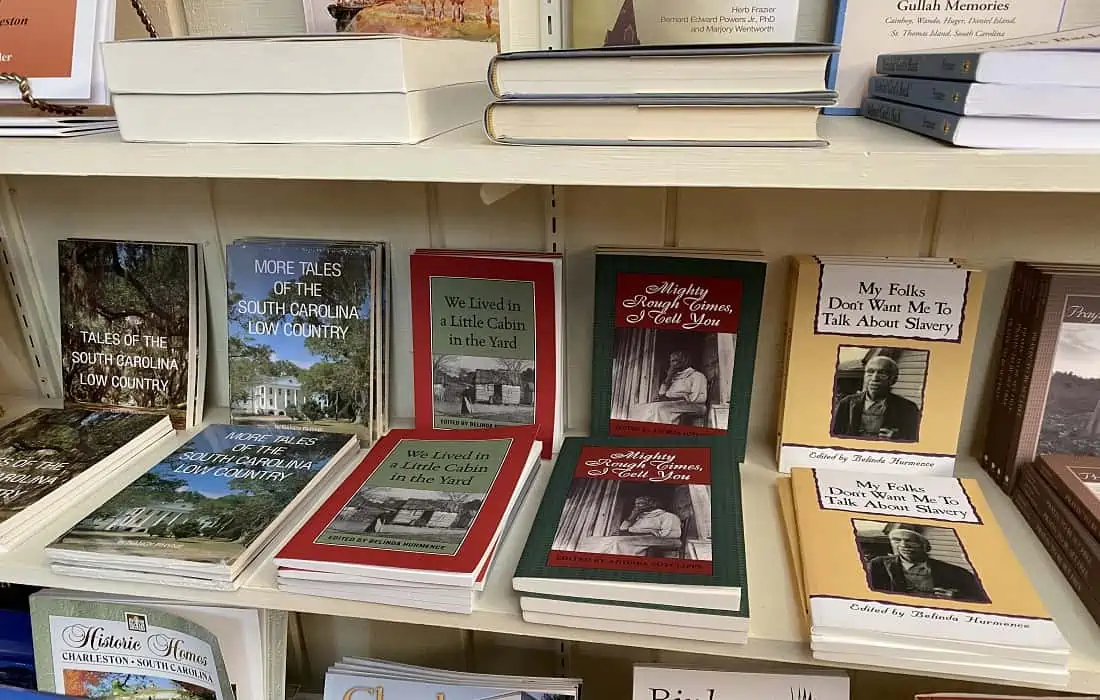
FAQs About Magnolia Plantation
Magnolia Plantation is open every day of the week, from 9 am to 5 pm.
No, Visitors must purchase the tickets at the gate.
With General Admission, visitors can walk through the historic gardens, visit the zoo, the conservatory, the peacock cafe, the swamp, and even the biking trails. Any changes in these areas would be for the guided tours.
Yes, leashed dogs are welcome at Magnolia Plantation all year round.
Yes, visitors can get food and refreshments at The Peacock Cafe.
Visitors can bring their food and non-alcoholic beverages with them. There are also several picnic tables onsite free for use.
If visitors arrive with luggage, they can leave it at the administration office while they explore.
There is free parking on site.
Photography is not allowed inside the main house. However, guests are free to take personal photos on the outside grounds.
Closing Thoughts
Magnolia Plantation is more progressive than I anticipated with its acknowledgment that enslaved people lived and worked there. They’ve done a reasonable job ensuring that black history isn’t left behind for those willing to pay to learn. Where it all crumbles is Magnolia Plantation still flirts with the ideology that there’s some form of southern charm to be celebrated in life on a plantation.
Does Magnolia Plantation cover up its dark past? Do they acknowledge and tell the story of slavery that was the backbone of their labor? Do they ignore or hide the fact that plantations were forced work camps? The answer is this: They acknowledge it all if you are willing to pay to hear about it, and they are quite happy to ignore it if that suits you.
Looking for more historical posts? Start here:
- Ca’ d’Zan – The Ringling Museum And Mansion
- Dachau Concentration Camp – Why You Should Visit
- Nottoway Plantation – The Most Controversial Plantation in Louisiana
- Solomon’s Castle Ona, Florida
- The Howey Mansion – Howey-in-the-Hills, Florida
- The Wonder House – Bartow Florida
- Whitney Plantation – America’s First Museum Dedicated to Slavery
We participate in the Amazon Services LLC Associates Program, an affiliate advertising program designed to provide a means for us to earn fees by linking to Amazon.com and affiliated sites.
Share with others!
Nikki Webster is a travel writer who covers how to travel while grinding a day job without breaking the bank. Nikki is always in search of off-the-beaten-track experiences and unique stays. She is particularly fond of Florida and writes extensively about the state. She flies around 60,000 miles annually and has visited 74 countries, 50 states, and six continents. You can read all about her travels at www.britonthemove.com or follow along on Facebook, Pinterest, and Instagram.
Similar Posts
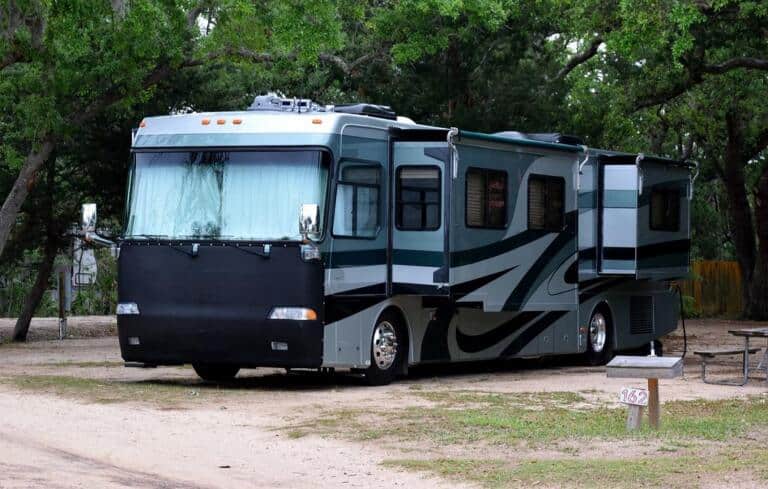
The Best RV Resorts In Florida
If you’re looking for a great place to go RVing in the United States, Florida should be at the top of your list. With its miles of sandy beaches and lush tropical forests, there’s something for everyone in this great state. RV Resorts in Florida are a big hit! The weather is perfect for traveling,…

Silver Glen Springs, Florida
Silver Glen Springs is one of Florida’s most popular and well-known springs. Silver Glen is a massive spring of crystal clear water frequented by many fans of snorkeling and boating and located in the Ocala National Forest. Accessible from the Silver Glen Run off of Lake George, this spring is a local favorite, and here’s…
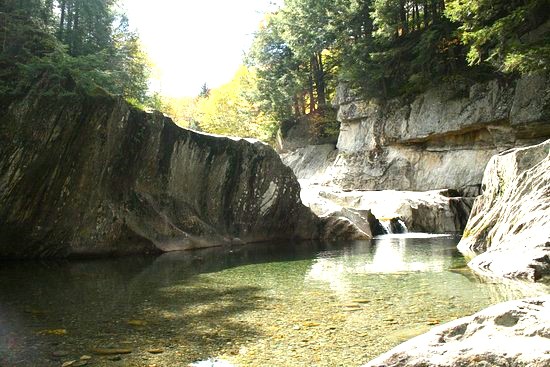
The Best Swimming Holes in Vermont
While Vermont is generally known for maple syrup and cheese, tons of swimming holes in Vermont are fantastic days out. Vermont offers mesmerizing landscapes, including hike trails and fishing spots. It is a state for all seasons and offers many activities tourists can enjoy. For us, the swimming holes in Vermont are a major attraction. …
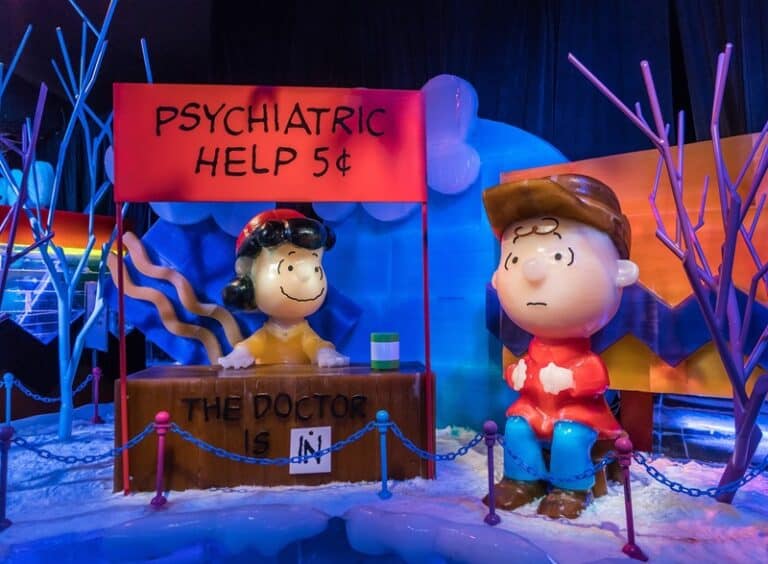
ICE at Gaylord Palms – Orlando, Florida
ICE at Gaylord Palms is an annual event that gives Floridians and visitors a unique way to experience the winter holidays. It may seem like Florida is all about sultry days and chilly nights, but that’s not always true. Gaylord Palms Resort and Convention Center kicks off the holiday season with Christmas festivities, including one…

Laguna Thermal Resort & Spa, Turkey – RCI Resort DH79
I have been dying to stay at Laguna Thermal Resort & Spa, Sındırgı, Turkey, located in the Northeast region of the Balkesir Province. It is an RCI property, and as you all know, I am a massive fan of using RCI to book weeks’ vacations using points. It is one of my favorite travel hacks…

Bucket List Ideas You Have Not Heard Of
Who’s not looking for bucket list ideas? Some people claim they don’t have a bucket list. I believe this in the sense that they don’t have a “before I die” list. But every human yearns after something. We all have a list! Whether you call it the bucket list, the before I die list, or…
Leave a Reply Cancel reply
Your email address will not be published. Required fields are marked *
Save my name, email, and website in this browser for the next time I comment.
Electrostal History and Art Museum

Most Recent: Reviews ordered by most recent publish date in descending order.
Detailed Reviews: Reviews ordered by recency and descriptiveness of user-identified themes such as wait time, length of visit, general tips, and location information.
Electrostal History and Art Museum - All You Need to Know BEFORE You Go (2024)
- (0.19 mi) Elektrostal Hotel
- (1.21 mi) Yakor Hotel
- (1.27 mi) Mini Hotel Banifatsiy
- (1.18 mi) Elemash
- (1.36 mi) Hotel Djaz
- (0.07 mi) Prima Bolshogo
- (0.13 mi) Makecoffee
- (0.25 mi) Amsterdam Moments
- (0.25 mi) Pechka
- (0.26 mi) Mazhor
- Car Rentals
- Airport Transfers
- Attractions & Tours
- Bundle & Save
- Destinations
- Trip.com Rewards
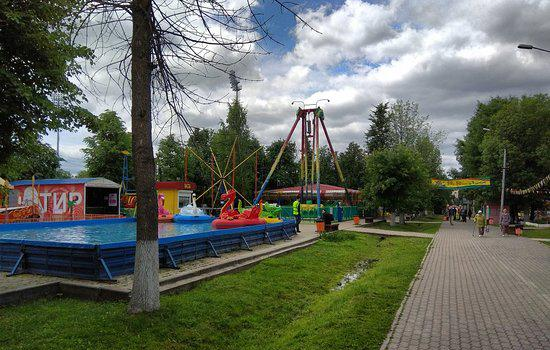
Elektrostal'

Elektrostal' Travel Guide
Experience elektrostal'.
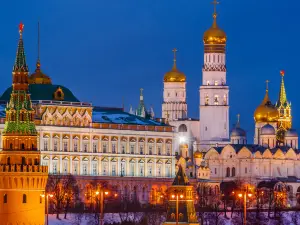
The Moscow Kremlin

Krasnaya ploshchad'

State Historical Museum
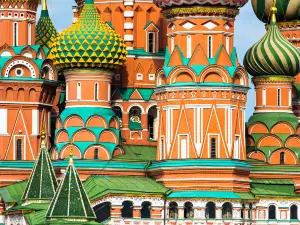
St. Basil's Cathedral
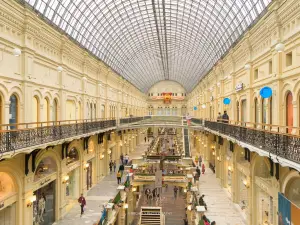
Moscow Metro
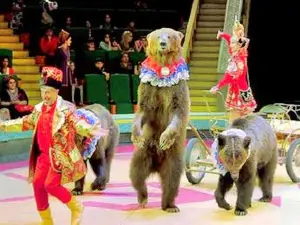
Great Moscow State Circus
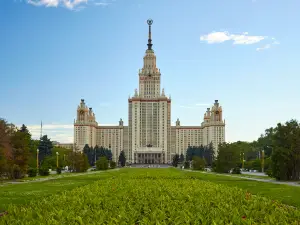
Moscow State University

Bolshoi Theatre

Cafe Vostochny Express

Kroshka Kartoshka

Coffee Shop Usy Teodora Glagoleva

Fabrika Obedov

Beer Club Tolsty Medved

Cafe Antresole

Quest-Cafe 4 Komnaty

Prima Bolshogo
Other recommended cities.
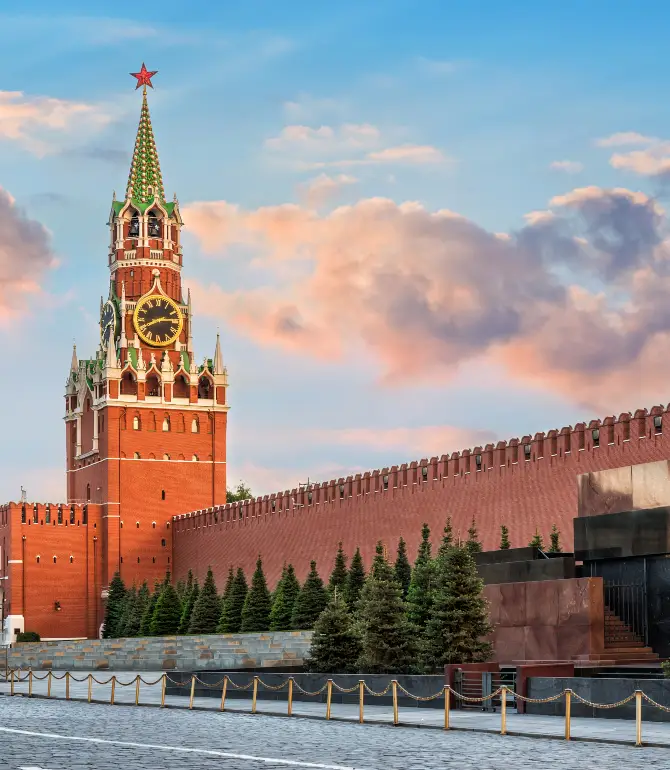
Popular Types of Attractions in Elektrostal'
Popular attractions in elektrostal', popular restaurants in elektrostal', popular destinations, recommended attractions at popular destinations, more things to do in elektrostal'.
- Customer Support
- Service Guarantee
- More Service Info
- Website Feedback
- About Trip.com
- Terms & Conditions
- Privacy Statement
- About Trip.com Group
Other Services
- Investor Relations
- Affiliate Program
- List My Property
- Become a Supplier

COMMENTS
Before Magnolia was a public garden, it was a working rice plantation. No visit can be complete without an understanding of the families who have lived on the "Street"—first as enslaved workers, and then as paid garden staff—throughout Magnolia's 350-year history.
According to Tripadvisor travelers, these are the best ways to experience Magnolia Plantation & Gardens: Magnolia Plantation Admission & Tour with Transportation from Charleston (From $75.33) Middleton Place Admission with Self Guided Tour and Lunch (From $120.90) Get Out of Town! Visit 12 Lowcountry Stops with the Complete Charleston Tour!
One thing I do almost every time I visit Magnolia Plantation is ride the Nature Tram. A tractor pulls a series of covered trailers with bench seats on a 45-minute tour of the plantation. During the pleasant ride, the driver narrates with a history of the plantation, exciting points of interest, and always points out any alligators along the way!
In the late spring and early summer, the Audubon Swamp Garden rookery comes alive with hundreds of nesting heron, egrets and anhinga. Every Sunday from 8:30 to 11 a.m., birding specialist Perry Nugent leads walks through the plantation and swamp garden, helping visitors spot some of the 260 birds that have been seen on the grounds.
Magnolia Plantation and Gardens (464 acres, 187.77 hectares) is a historic house with gardens located on the Ashley River at 3550 Ashley River Road west of Ashley, Charleston County, South Carolina. It is one of the oldest plantations in the South, and listed on the National Register of Historic Places.
The Charleston Magnolia Plantation is open all days of the week from 9 am to 5 pm. The last admission is at 4 pm, and it is also the time when the last ticket is sold. Best time to visit. The best time to visit Magnolia Plantation is as soon as it opens at 9 am.
Magnolia Plantation & Gardens is ranked #10 out of 27 things to do in Charleston, SC. ... The plantation offers a 45-minute "From Slavery to Freedom" tour where travelers can visit the cabins and ...
Hours: 9 AM until 5 PM. Magnolia is located at 3550 Ashley River Road, Charleston, SC 29414. To get to Magnolia, click here for exact directions from your starting point. For written directions from a variety of starting places such as Downtown Charleston and the many area beaches, visit Magnolia's website.
Some would argue that Magnolia Plantation and Gardens in Charleston, SC, is a tourist trap.. And maybe it is. But it's still worth a visit. One of the oldest plantations in the country, Magnolia Plantation and Gardens was founded in 1676 by Thomas and Ann Drayton. And 15 generations later, their descendants, the Drayton family, still own the plantation.
Magnolia Plantation Hours and Admission. Hours: Open Daily 9 am - 5 pm. Ticket Sales stop at 4 pm. Open 365 days a year. Admission: Prices below are for tickets purchased online. Add $3 per person for tickets purchased onsite. Adults (13+) $35. Senior (62+) & Military (with ID) $32.
Best Plantation to Visit in Charleston - Magnolia Plantation and Gardens. Adjoined to the Drayton Hall Plantation, Magnolia Plantation and Gardens was also established by the wealthy Drayton Family and is the most visited plantation in Charleston. Established in 1676, Magnolia Plantation is one of the South's oldest surviving plantations.
Deciding To Visit Magnolia Plantation. When I found out that we were going to Charleston, South Carolina, the first thing that came to mind was Magnolia Plantation. Having been persuaded to at least visit a plantation before putting pen to paper, I decided to give it a shot. Fortunately for me, this was a wise decision as there are some ...
Known as South Carolina's most visited plantation, Magnolia Plantation showcases the natural beauty of the lowcountry through winding nature trails and Romantic-style gardens. Perfect for families, the little ones will enjoy the wildlife petting zoo, nature train, Rice Field boat tour, or the watching countless animals in their natural ...
At the time of writing, Magnolia Plantation is open from 9:00 am to 5:00 pm, seven days a week. (Winter hours are thirty minutes later). Admission prices depend on the type of tours you want to take, with discounts given to seniors, military personnel, children 6-12, and children 5 and under:
CHARLESTON, S.C. — Magnolia Plantation & Gardenshas been used for 345 years, and in that time, has seen beauty, robust farming and wealth. It has also seen the transition from the horror of slavery to freedom. Enter the grounds and you are met with an almost ethereal look at life hundreds of years ago.
Posted by u/[Deleted Account] - 122 votes and 18 comments
Most Recent: Reviews ordered by most recent publish date in descending order. Detailed Reviews: Reviews ordered by recency and descriptiveness of user-identified themes such as wait time, length of visit, general tips, and location information.
Explore Elektrostal' with Trip.com's comprehensive travel guide. Discover the city's top attractions, best local dishes, essential travel tips, and hidden gems. Get insights from real travelers' reviews and make the most of your visit.
40 Facts About Elektrostal. Elektrostal is a vibrant city located in the Moscow Oblast region of Russia. With a rich history, stunning architecture, and a thriving community, Elektrostal is a city that has much to offer. Whether you are a history buff, nature enthusiast, or simply curious about different cultures, Elektrostal is sure to ...